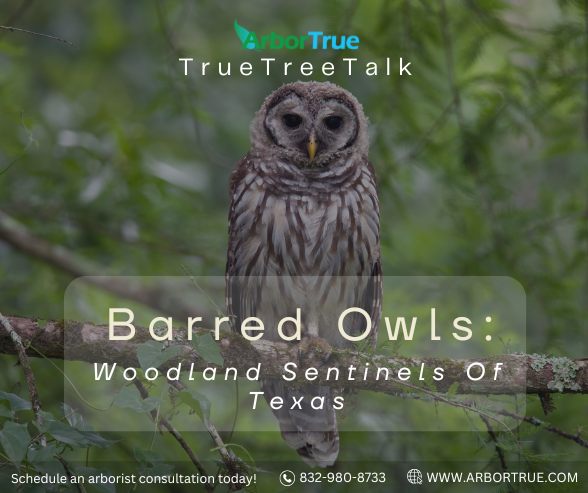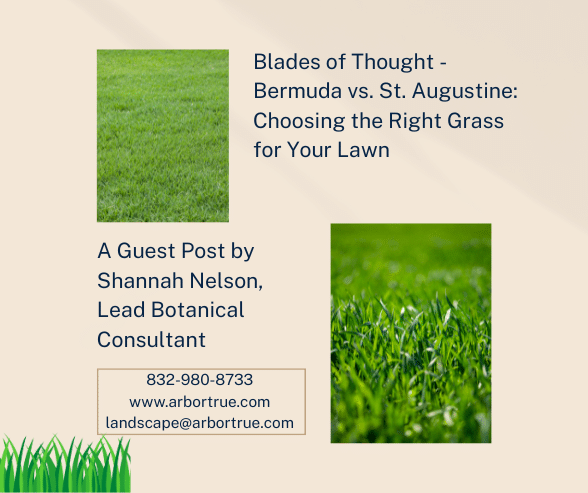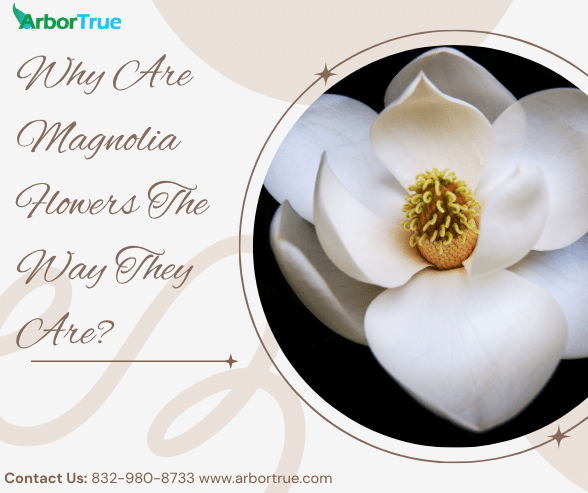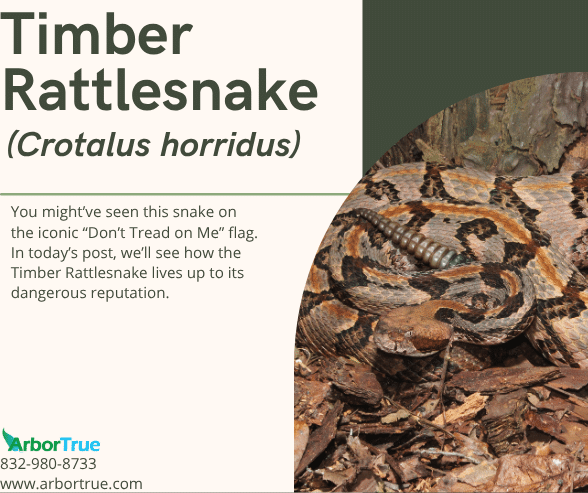
The Hidden Language of Forest Trees: Understanding Tree Interactions
March 26, 2025
Mushroom Monday: Snowy Waxcap (Cuphophyllus virgineus): A Pure White Forest Gem
March 31, 2025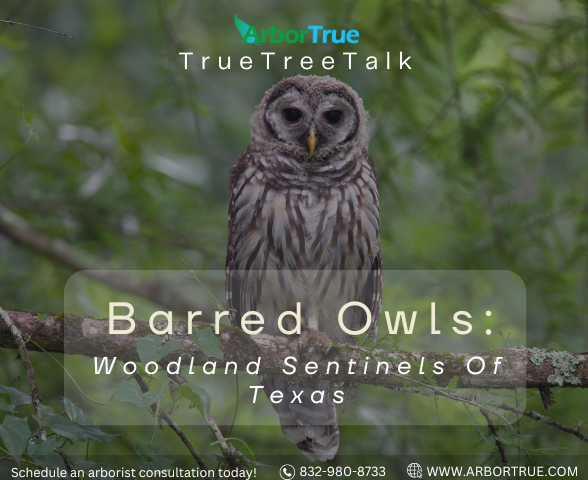
Barred Owls: Woodland Sentinels of Texas
Look up into the trees across Texas, particularly in our eastern forests and mixed woodlands, and you might hear the distinctive “who cooks for you, who cooks for you all” call of one of our state’s most remarkable owls. The Barred Owl (Strix varia) brings character to our wooded landscapes with its distinctive appearance and vocal presence.
What Do Barred Owls Look Like?
These impressive birds wear a unique combination of features that make them easily recognizable among Texas owls. Unlike their Great Horned Owl cousins, Barred Owls have a rounded head without ear tufts. Their large dark eyes, set in a distinctive two-lobed facial disk divided by their bill, give them an alert, expressive appearance. Their chest and belly showcase bold vertical brown and white bars, creating a pattern that inspired their common name.
At 16.9-19.7 inches in length with a wingspan reaching 39-43.3 inches, Barred Owls present an impressive sight in flight. Their overall coloration combines warm browns and grays above with lighter underparts marked by those characteristic vertical bars. Unlike some bird species where males and females look distinctly different, Barred Owls show little difference between the sexes, though females typically measure slightly larger than males.
Where Do Barred Owls Live?
Throughout Texas, these adaptable owls show clear habitat preferences. They are most commonly found in the East Texas Pineywoods, where mature forests provide ideal conditions for both hunting and nesting. Additionally, they inhabit the South Texas Thornscrub and Oaks and Prairies regions, particularly where large trees create suitable woodland environments.
These owls prefer mixed wooded areas with:
- Mature forest stands
- Large trees for nesting
- Dense canopy cover
- Access to water sources
- Areas with open understory for hunting
What Do Barred Owls Eat?
Barred Owls demonstrate remarkable hunting abilities, and are primarily active during night and twilight hours. Their diet includes a diverse range of prey, from small mammals to amphibians and insects. They typically hunt from a perch, using their keen hearing and excellent night vision to locate prey in the darkness below.
Family Life and Behavior
Barred Owls demonstrate fascinating nesting behaviors. They typically select large tree cavities for their nests, often choosing mature hardwoods that provide spacious hollows. Unlike some birds that build elaborate nests, Barred Owls may simply use the natural cavity floor, occasionally adding minimal lining material.
These owls typically lay 2-3 white eggs, which the female incubates for about 28-33 days while the male provides food. After hatching, the young owls remain in the nest for 4-5 weeks before venturing out to nearby branches, though they continue to receive parental care and protection.
Their distinctive call, described as “who cooks for you, who cooks for you all,” serves multiple purposes in their social interactions. These vocalizations help establish and maintain territories, coordinate between mates, and communicate across their woodland home.
Living with Barred Owls
Barred Owls require specific habitat features for successful nesting and hunting. These owls benefit from:
- Preservation of mature trees with natural cavities
- Protection of mixed woodland habitats
- Maintenance of forest understory
- Conservation of wetland areas near woodlands
Conservation Considerations
While Barred Owls maintain stable populations across much of their range, they face challenges from:
- Loss of mature forest habitat
- Removal of dead trees containing potential nest cavities
- Urban development in woodland areas
- Competition for nesting sites
Looking Forward
Understanding these remarkable woodland residents helps us appreciate the importance of maintaining mature forest habitats in Texas. Their presence adds to the diversity of wildlife in our state’s woodlands.
If you found this information about Barred Owls interesting, check out our other posts on our TrueTreeTalk blog. Follow us on Facebook to keep up with these and other posts. Check out our list of blog posts grouped by topic for more to read. Also check out our posts about Blue Jays, American Crows, Red-headed Woodpeckers, and Golden-Cheeked Warblers to learn about other birds.
* * *
ArborTrue is a science-based tree service company in the greater Houston area. We also serve Austin and other parts of Central Texas. We provide a range of services including tree trimming, tree pruning, tree removal, tree planting, arborist consultations, and more. Call us today at 832-980-8733 (Houston) or at 512-546-3833 (Austin) or reach out to us online to schedule an appointment.

